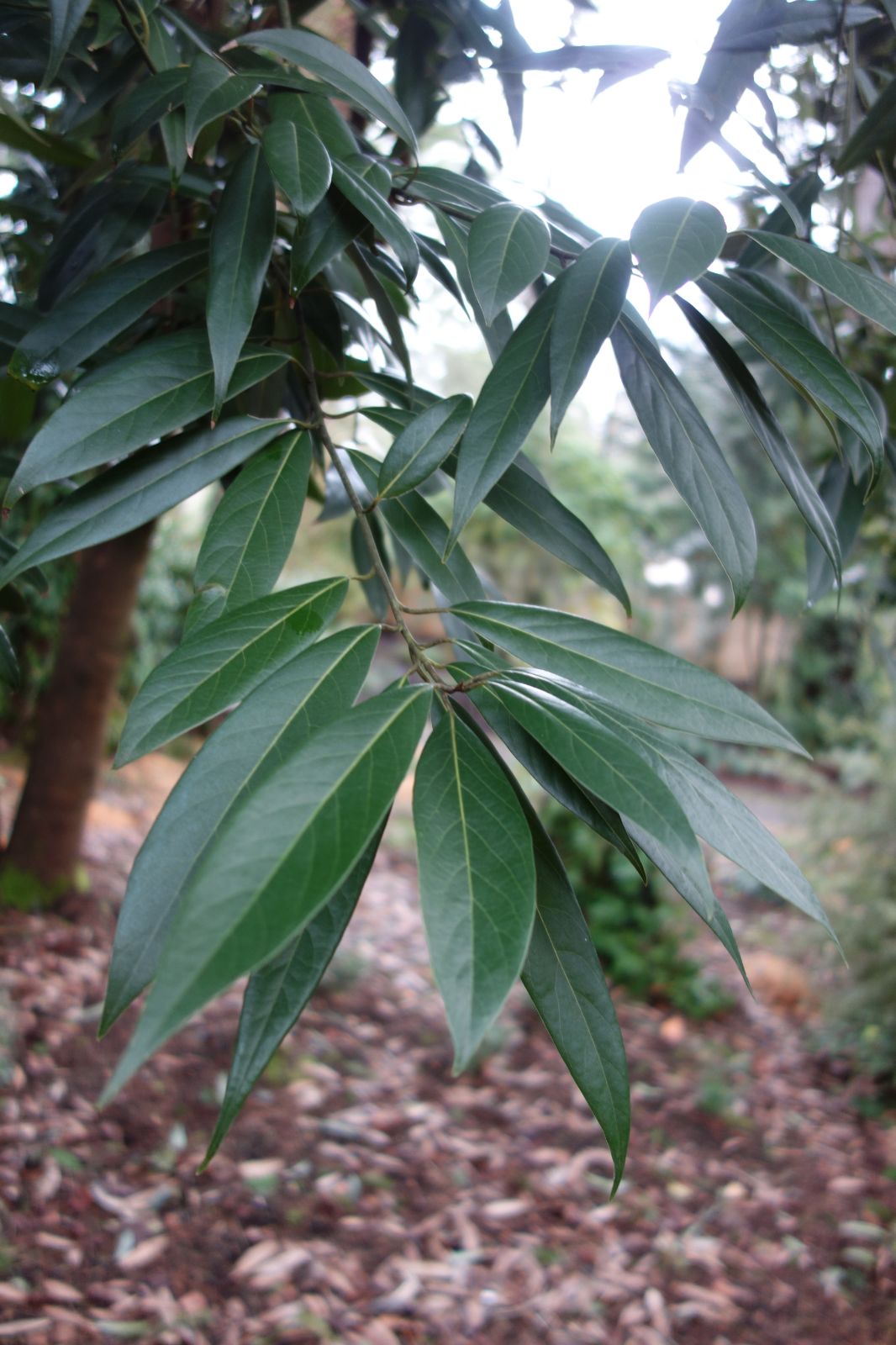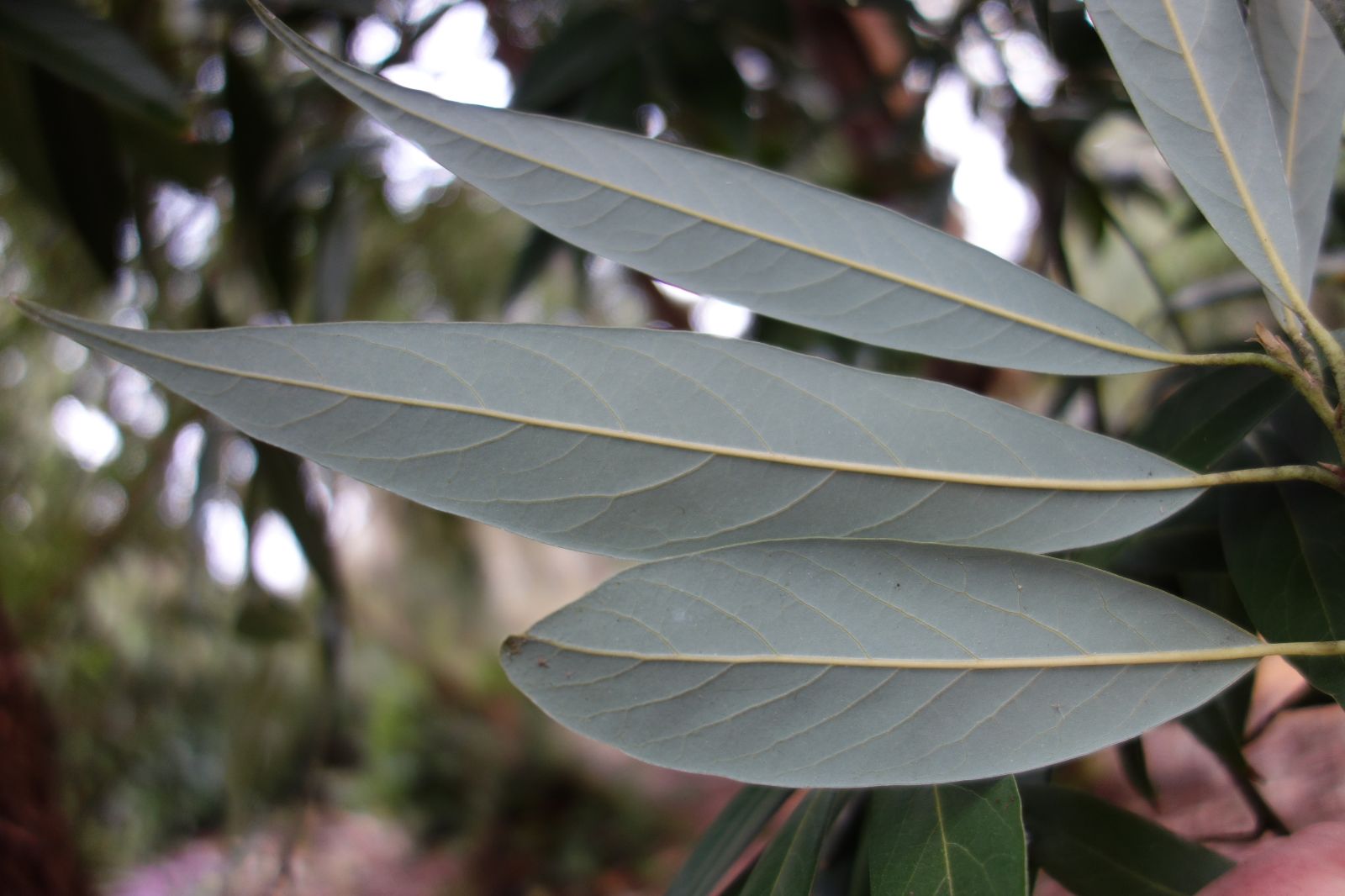Persea bracteata
Credits
Article from New Trees by John Grimshaw & Ross Bayton
Recommended citation
'Persea bracteata' from the website Trees and Shrubs Online (treesandshrubsonline.
Genus
Synonyms
- Machilus bracteata Lecomte
Shrub or tree to 12 m or more, forming a rounded canopy. Branchlets yellowish green, somewhat flattened, ridged, with pointed terminal buds enclosed in two sericeous scales. Leaves 7–10(–21) 2.5–4.5 cm, lanceolate to narrowly obovate, apex shortly acuminate, coriaceous, glabrous, dark shiny green on upper surface, lower surface waxy and pale whitish green; petiole 1.3–2 cm, yellowish green. Inflorescence of axillary panicles 6–14 cm long, subtended by large bracts to 7 mm that fall as the inflorescence develops; flowers held in sub-umbels on panicle branches, 4–6 mm long, glabrous outside, hairy within, yellow or yellowish green, fragrant. Fruits in clusters, 7 mm, globose, green becoming purple-black. Flowering March, fruiting September (China). Lecomte 1913, Wharton et al. 2005. Distribution CHINA: Yunnan. Habitat Forest and forest edges, between 1370 and 2600 m asl. USDA Hardiness Zone 7. Conservation status Not evaluated. Illustration Wharton et al. 2005.
In the Washington Park Arboretum there is a magnificent Persea tree forming a dense rounded canopy of elongated dark green leaves with glaucous undersides – a really fine plant that is rightly much admired by the horticultural community of the Pacific Northwest. It has been grown there since 1938 and was collected by Prof. T.T. Yu, probably in Yunnan in 1937, under the number Yu 7835. Until recently it had always been known as P. yunnanensis, but its true identity has been the subject of considerable debate (R. Hitchin, pers. comm. 2004) and it has now been identified as P. bracteata (Wharton et al. 2005). This famous tree, currently about 12 m tall, fruits prolifically, and self-sown seedlings are frequent; its progeny are to be found in numerous West Coast gardens and collections, labelled P. yunnanensis. The foliage emerges erect, displaying the glaucous undersides like a cluster of ‘silver swords’ (Wharton et al. 2005), and Peter Wharton described it (in the same work, The Jade Garden) as ‘without doubt one of the most desirable evergreens for general cultivation’. Having withstood the Seattle climate for decades it can be considered hardy for the Pacific Northwest and western Europe. True Persea yunnanensis (Lecomte) Kosterm. has shorter, ovate to broadly lanceolate leaves: George Forrest found it at 2400 m in central northern Yunnan (G. Forrest 23536, June 1923), and it might also be worthy of the attention of contemporary collectors.


